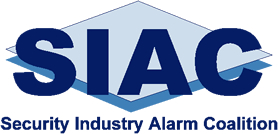It’s a reality in our business that unwanted alarms occur far too frequently at government facilities, schools and churches. There are several reasons for this: Many different people may be responsible for turning on and off the system; someone new may have just started working and is unaware of the code word; inadequate training of the person responsible for the security system.
These seem like simple problems, easily rectified. And they are. But at the same time, they don’t get fixed unless 1) the issue is identified, and 2) a plan is put in place to change poor practices or behaviors. You can’t change things by doing the same thing over and over.
At SIAC, we’re a firm believer in finding out what is going wrong, then coming up with solutions. In the case of churches, we recommend that security companies reach out to leadership at all the places of worship that they service. Go into your records and find out how many alarms they had the past month, six months or in the last year. Pull out those churches that have the highest number of unnecessary alarms.
Take that list and get in touch with the minister, vestry or other member of the leadership. Discuss the problem with these alarms, how they affect police response, and the attitude of officers when they do come around to check on the church. If there are too many alarms, the sense of urgency is lost.
Next, propose a plan to further educate key church officials. Give them training. Provide them specific written materials on how to reduce false dispatches. Make this information straight forward, short and clear. Ask questions to ensure they understand any complexities. Follow up as necessary with a call to ensure they are operating the system properly.
If every security company identified those places of worship with high rates of false dispatches, then implemented this type of program to fix the problem, public safety would be enhanced, police protection would be improved, and relationships would grow stronger in the community. That’s something we all should support.
